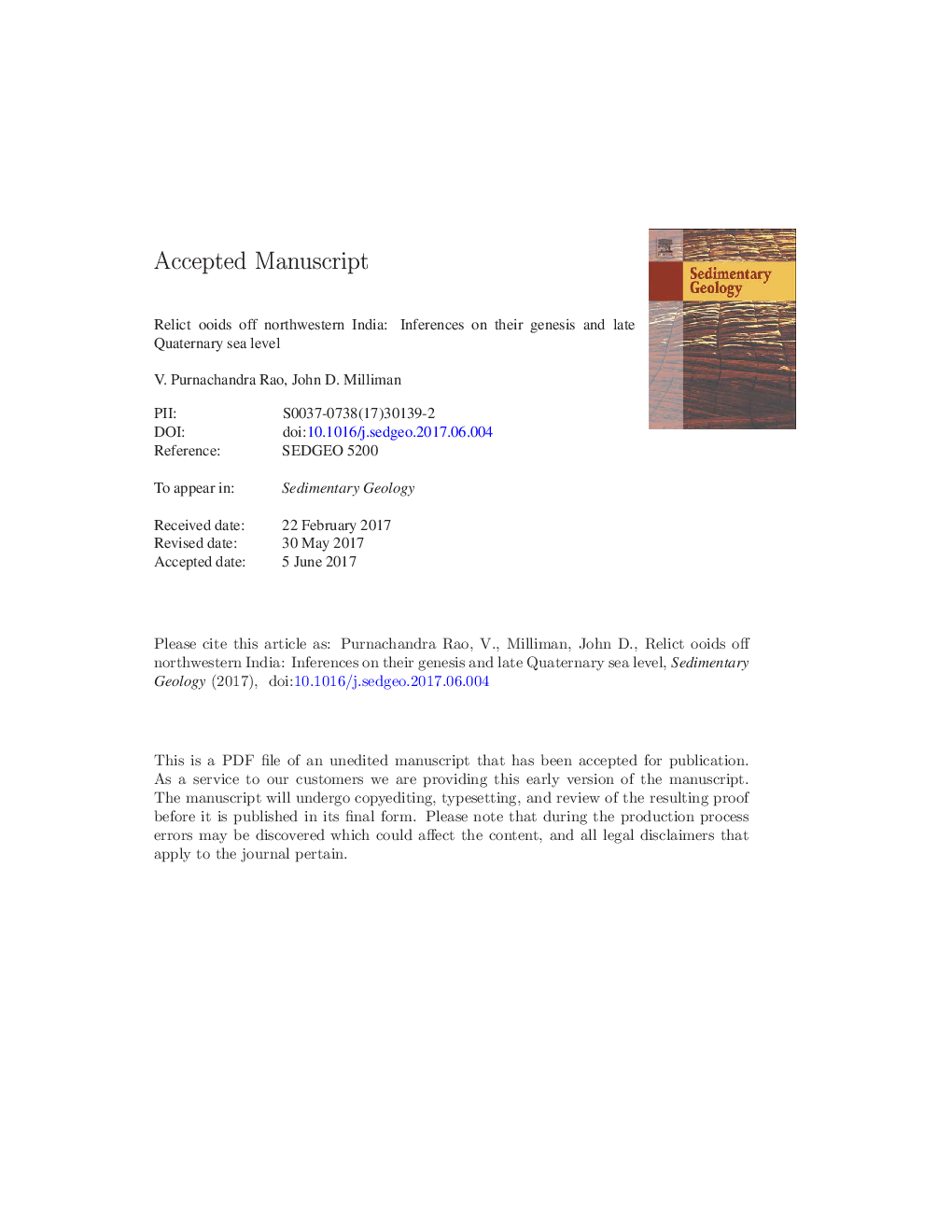| کد مقاله | کد نشریه | سال انتشار | مقاله انگلیسی | نسخه تمام متن |
|---|---|---|---|---|
| 5781341 | 1636005 | 2017 | 33 صفحه PDF | دانلود رایگان |
عنوان انگلیسی مقاله ISI
Relict ooids off northwestern India: Inferences on their genesis and late Quaternary sea level
ترجمه فارسی عنوان
ریشه در شمال غربی هندوستان: نتیجه گیری در ژنز و سطح اواخر کواترنری
دانلود مقاله + سفارش ترجمه
دانلود مقاله ISI انگلیسی
رایگان برای ایرانیان
کلمات کلیدی
موضوعات مرتبط
مهندسی و علوم پایه
علوم زمین و سیارات
فرآیندهای سطح زمین
چکیده انگلیسی
Relict carbonate sands dominated by ooids and faecal pellets are common on the continental shelf, between 60 and 110 m, off northwestern India. The shiny tan/white aragonitic ooids closely resemble modern Bahamian ooids, with cortex thicknesses varying from < 5 μm to 200 μm. Tangential laminae, ranging from 1 μm to 20 μm in diameter, occur as straight to contorted stacked tubules, similar in appearance to algal or microbial filaments. Bacteria associated with the decaying organic sheath of the laminae may have played an important role in subsequent aragonite precipitation. Bladed or radial aragonite microstructures are secondary features in the cortex, apparently formed during early diagenesis by mineralization of organic matter associated with the tangential laminae. Calibrated ages of the ooids range between 9.8 and > 23 ka BP, and δ18O values suggest that these relict ooids formed during cooler and drier post-LGM conditions and later during the re-intensified Holocene monsoon climate. An age vs. depth plot suggests that most of the ooids formed at water depths between ~ 10 and â 40 m, thereby calling into question whether relict shelf ooids are reliable indicators of past sea level.
ناشر
Database: Elsevier - ScienceDirect (ساینس دایرکت)
Journal: Sedimentary Geology - Volume 358, 1 August 2017, Pages 44-50
Journal: Sedimentary Geology - Volume 358, 1 August 2017, Pages 44-50
نویسندگان
V. Purnachandra Rao, John D. Milliman,
